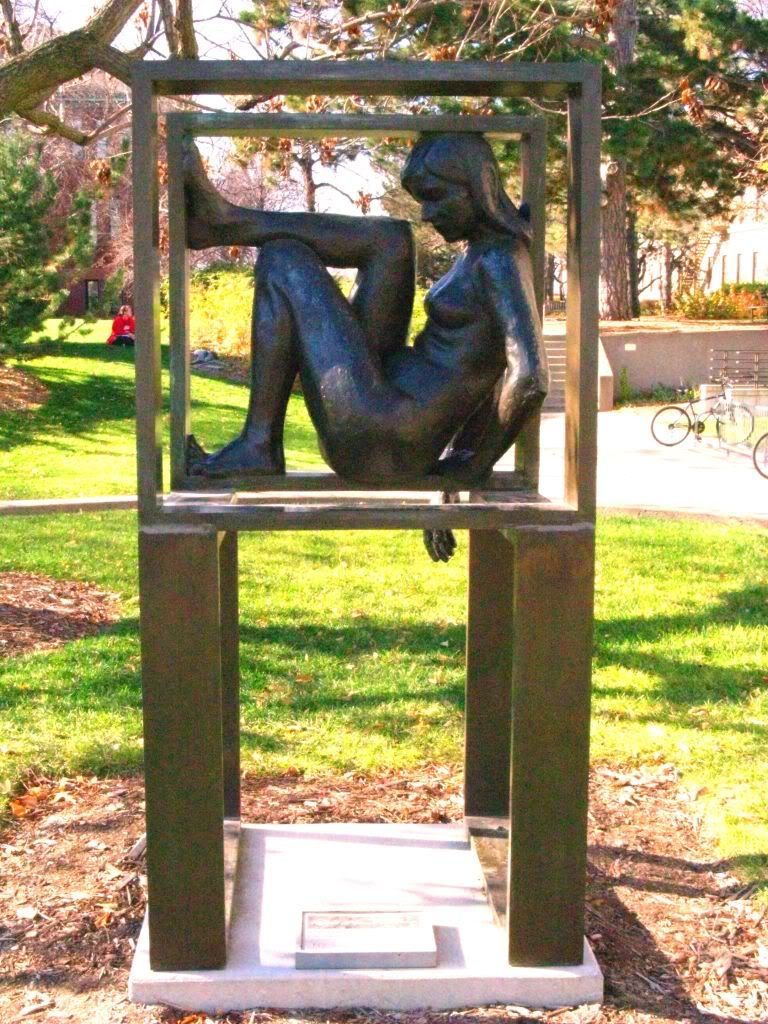 e, theme and inspiration. To completely understand, it make sense to first go into the details that comprise this piece.
e, theme and inspiration. To completely understand, it make sense to first go into the details that comprise this piece.For instance, the shapes and styles of the different parts of the sculpture are very important. When viewing the sculpture in the picture at left, it is clear to see the distinct difference between the rounded, seemingly organic, shapes of SANDY's body and the flat, clean, rigid framework that surrounds her. This is one point that can be viewed in a few different ways. As this sculpture was designed and constructed in 1967, there is an easy to see connection between SANDY's position in a framework box and the civil rights battle that was raging throughout society at the time. Given SANDY's posture of being pushed against each of the four corners and sides of her square, it can be viewed that she is still being cofined to her sector of society, but that she is starting to reach out and get a feel for what life is like on the outside. Truly, this would be a woman's seen purpose of the piece.
As for a what a man may see, realize how the sculpture is constructed with two squares supporting two squares with pairs of angles everywhere, yet SANDY is alone on her side of the sculpture. With a bit of inferring, the pair to a woman is a man, which seems to be missing. Now again to the civil rights purpose, where a man obviously wouldn't be stuck on the inside of a framework box. Yet, if a man stepped up and looked into the box, the sculpture would be complete with a man looking from the outside in on the woman looking for the inside out.
"SANDY: in Defined Space" is a very deep sculpture, much deeper than a first glance may provide. A woman sitting in a mostly open box is transformed into a inspirational lecture about civil rights and gender theory. Of course Robert Miller had better intentions for his most famous design than for wondering students to look at a naked bronze girl sitting uncomfortably three feet above the ground. Possibly these intentions didn't involve civil rights at all, but had they been? Well he would have hit the nail on the head.